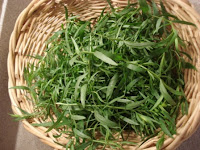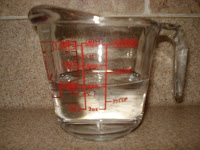Lavender needs little care, has few pests, adds beauty and fragrance to your garden, and when dried, decorates your home and pleases your palette. This versatile perennial comes in many varieties that bloom throughout the summer, beginning in June.
 |
| North Wind Farms, Pawling, NY |
When she is not in her lavender field, creating crafts, or in the kitchen creating amazing lavender goodies (scones, biscotti, jelly, syrup, breads) you can find her at a number of local farm markets. She is extremely knowledgeable about every aspect of lavender: growing, baking, crafts and use as aromatherapy; she generously shares her knowledge with her customers. You’ll find her at the following locations this summer:
Muscoot Farm Market, Katonah, NY www.muscootfarm.org/farmersmarket
(Every Sunday 10am - 3pm) - Starts May 9, 2010
Millbrook Farm Market, Millbrook, NY www.millbrookfarmersmarket.com
(Every Saturday 9am - 1pm) - Starts May 29, 2010
Scarsdale Farm Market, Scarsdale, NY
Starting May 22nd, every other Saturday 9am to 1:30 pm.
Bronxville Summer Market - April 24, 2010 - Kick Off Day
Bronxville, NY Starting May 29th, 2010 every other Saturday
Clermont State Historic Site - Hudson Bush Plant Sale June 5, 2010 -
10am - 2pm (www.friendsofclermont.org for information)
Harvesting Your Own Lavender
Because I use lavender as a perennial border plant as well as a culinary herb, I harvest stems one-by-one, allowing me to have garden plants in full bloom, while my harvested stems dry in the cellar. Cut stems near the bottom of the stem, just above a pair of shoots.
Peel the leaves off the stems.
Hang the bunches upside down in a dark, cool, dry place for a few weeks until the stems feel dry.
Then use the lavender on the stems for floral displays or peel the buds off the stem for culinary uses.
Combine sugar and lavender in a ratio of one tablespoon dried lavender buds to every cup of sugar.
When baking, measure the amount of sugar you need into a food processor and blend, then use this flavored sugar to add the delicate flavor of lavender to almost any of your favorite baked goods:
cookies, biscotti (recipe), cakes, pancakes, muffins, and scones.
If you have lavender plants with very long stems, try making lavender wands by following this step-by-step process described by Peaceful Valley Organics.
And if you're not the "crafty" type you can purchase beautiful hand-made wands from Ellen at one of her markets.































